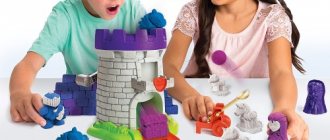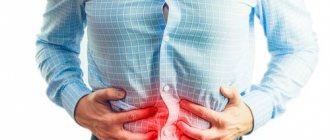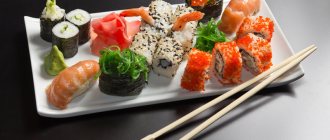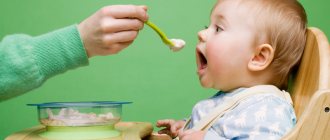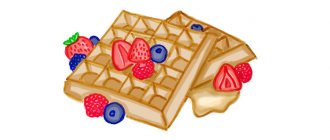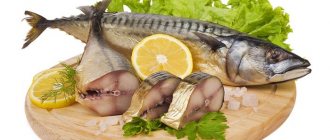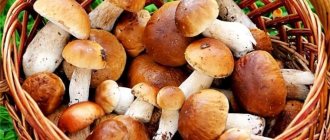Sometimes parents are faced with strange situations: the child begins to feast on chalk, eats sand, soil from a flower pot, eats snow with great pleasure and licks sulfur from matches. The first thing that comes to mind is a consequence of a deficiency of certain substances or vitamins in his body. But this behavior does not always indicate a lack of useful micro- and macroelements in the diet.
There is something that is not usually accepted; children start for two reasons. First of all, out of simple childhood curiosity.
Taste buds are an important cognitive tool for a child, and the baby tastes and tastes the world as much as his upbringing, living conditions and parents allow.
But it’s one thing to taste something inedible once or twice, and quite another to systematically eat something that’s not edible.
If a child constantly eats something that is not acceptable, you should definitely consult a doctor. It is possible that he is developing allotriophagy - an eating disorder in which a person eats inedible things.
In the adult population of the planet, this phenomenon is relatively rare - something that only 1% of adult men and women regularly eat inedible. But for children everything is different. Up to 15% of preschool children suffer from allotriophagy, and up to 32% of children under the age of 4 years are prone to eating inedible things.
Whether this is dangerous depends on what exactly the child prefers. Chalk will not cause harm to health, but glass, sand, and small metal objects can pose a serious danger to the life and health of the baby.
There are two types of allotriophagy: pathological, characteristic of weak-minded, mentally ill people who simply do not realize what they are trying to chew, and also children’s – physiological. It occurs against the background of perversion of taste perceptions, while the child is mentally healthy and no other oddities are noted in his behavior and development.
In most cases, the child eats inedible things in addition to his main, completely normal diet . And only in rare cases is allotriophagy of a total nature, when the baby replaces normal foods with paint, sand, clay, wood, paper or something that suits his taste, refusing to eat ordinary foods.
This is the main question that torments parents. It should be noted that in childhood it is almost impossible to establish the exact causes of allotriophagy.
There are a few common root causes for particularly persistent parents.
- Difficult family relationships . Psychiatrists believe that this factor is decisive. Too demanding upbringing, humiliation of a child, lack of love and care, neglect, domestic violence, including psychological, lack of toys and attention may well provoke an eating disorder.
- Emotional and psychological trauma . Usually the first meal with paper clips or candy wrappers occurs during a period of certain events that caused severe emotional distress in the child. Thus, allotriophagy can develop in a child at the epicenter of military operations and natural disasters, after the death of a loved one, or after violence.
- Specific lack of certain amino acids, macroelements, vitamins . For example, the desire to eat chalk is associated with a lack of calcium, and sulfur from matches is unconsciously chosen by a child if there is not enough sulfur and phosphorus in his body.
- Hormonal disorders . For this reason, oddities and food “fads” occur in pregnant women. And it is the imbalance of hormones that causes food perversion in adolescents. But even in children, the endocrine background may be disrupted in terms of the balance of hormones that affect the sense of smell and taste.
- Mental disorders . Allotriophagy usually occurs in children with schizophrenia, severe mental retardation, mental retardation, and autism.
If a child eats dirt or soil from a flower pot, it can be assumed that he has a lack of iron in the body. You need to do a blood test to assess the hemoglobin level and find out for sure whether the baby has anemia.
Eating soil and clay in itself is dangerous, because it is in this environment that the eggs of many parasites, cysts, and bacteria that can cause serious illnesses are best preserved.
The desire to chew icicles, by the way, is also often associated with a lack of iron. Systemic poor nutrition, unbalanced, insufficient, causes a desire to chew wood, matches, coal.
A child begins to eat soap not only because of its attractive smell, but also because of a lack of zinc in the body. And the child absorbs salt in pinches, most likely due to a lack of sodium.
Children begin to eat hair due to a lack of amino acids.
Before you start feeding your child heavy doses of a substance that, in your parental opinion, he lacks, you should visit a doctor. You can contact your regular pediatrician.
This specialist will prescribe the examination necessary in this case - a general and biochemical blood test.
Their results will help you understand if your baby needs iron, calcium, potassium, magnesium, zinc, selenium and other substances.
If the tests are good and the child seems mentally healthy to the doctor, it may be recommended to take a blood test for a hormonal profile, as well as visit a child psychologist or psychotherapist who will help find and eliminate possible psychogenic causes of an eating disorder.
No special drugs have been created to treat allotriophagy. If tests show a deficiency of certain vitamins and minerals, either a comprehensive multivitamin or a specific vitamin or mineral is recommended. In case of hormonal imbalance, treatment is prescribed by an endocrinologist and consists of eliminating the deficiency or excess of certain hormones.
Treatment of severe allotriophagia consists of providing the child with psychotherapeutic assistance , which will include family activities, art therapy, and hypnotherapy for adolescents.
It is noteworthy that sometimes a new toy helps to cope with the problem - the variety of games reduces the child’s need to eat inedible food. For allotriophagy in mentally ill children, treatment is carried out by a psychiatrist.
Dr. Komarovsky and his colleagues urge parents to first try to change the approach to shaping the child’s diet, pay attention to what he is doing and what he needs.
You will learn more about the correct formation of a child’s diet by watching the following video.
What will happen to a child who has eaten sand and earth?
Sand itself is not very dangerous for the body; it is simply excreted in the feces. The danger comes from everything that may be in it: fly larvae, parasite eggs, various microorganisms. Outdoor sandboxes are especially dangerous in this regard. Naturally, the same thing can be picked up when eating soil.
The second danger, which mainly concerns sand, is the small objects found there. A child can be injured by a piece of glass or a stone, or burned by a cigarette. Sand or soil can damage the lining of the mouth. There is also a chance that the baby will choke or inhale grains of sand.
A child is unlikely to be able to swallow large amounts of sand or soil, because they are tasteless, and eating them is not very convenient or pleasant, so this is unlikely to greatly affect the functioning of the gastrointestinal tract. Mild abdominal pain or upset bowel movements may occur. The main danger is still parasites and the risk of damaging the mucous membranes.
There may be parasite eggs and harmful microorganisms in the sand or soil
This is how I experience the world!
No matter how irritated and swearing you adults may be, it is almost impossible to fight sand eating. You must understand that the little man is actively exploring the world, and only in this way can he taste the environment. It is still very difficult for a one-year-old baby to realize in his own head that he should not put everything in his mouth.
However, the child already understands quite well the change in intonation in an adult’s voice, so he will be smart enough to recognize dissatisfaction with eating sand in his mother’s voice. If a child is obedient, he will immediately stop putting sand in his mouth in front of adults. But this does not mean at all that he will not repeat his attempt at the moment when you lose sight of him. As soon as an adult turns away, everything will happen again, so be constantly on guard.
How to prevent such situations?
As soon as a little person begins to walk and run independently, a new stage of education begins, when parents have to deal not only with his development, but also take safety measures. The baby is not yet aware of all the dangers that await him, and in order not to intimidate or suppress the child, making comments to him at every step, you have to use tricks.
Before going to public sandboxes, which do not comply with sanitary standards, you can arrange a rehearsal at home - buy a tray and fill it with special harmless sand for children, introduce the baby to the pleasant crumbly texture, and gradually teach him not to put it in his mouth, to protect his nose and eyes from sand.
Date: January 8, 2021
Is sand really that bad?
Source:
True, there is another point of view regarding the consumption of inedible objects. Some experts believe that consuming sand or soil in small quantities can be beneficial, in particular, for young children and pregnant women. The emergence of such a position was led by the study of the cultural characteristics of various countries and nationalities. As a result, researchers have found that eating soil and sand can help protect against certain plant toxins and parasites that are especially dangerous for vulnerable children and women. Plus, sand and soil are rich in calcium, iron and other microelements necessary for active growth and well-being. So it can be assumed that eating such substances represents a certain program laid down at the genetic level.
However, caution must be exercised, since modern sand is far from the same that our ancestors may have used as medicine. Sand in a sandbox, on a beach or in a park can contain a lot of small debris: cigarette butts, small pebbles, tiny shards of glass and more. When eating, a child may choke or injure the oral mucosa, as well as pick up parasites.
Do you think that eating sand and other similar items is really an echo of the program embedded in the human body? Or is it simply an eating disorder caused by mental abnormalities or a lack of certain elements?
Source:
Related links:
Did you like the post? Support Chips, click:
About the benefits of cellulose
The properties of cellulose are such that in the form of a food additive it is not digestible, but sometimes it is useful:
It may be useful as food for intestinal bacteria that produce vitamin B and absorb bile acids. The next positive property of cellulose is useful for obesity - it suppresses the feeling of hunger
In addition to this, intestinal motility is activated. Cellulose fibers reduce the risk of developing heart disease, improve blood properties, and absorb and remove cholesterol. The gel-forming property of cellulose stops the absorption of glucose, which is important for obesity and diabetes. Cellulose in the form of dietary supplements has a beneficial effect on brain blood circulation, preventing blood clots, and is useful in preventing stroke. When food cellulose enters the body, the risk of cancer of the large intestine, mammary and prostate glands is reduced. https://www.youtube.com/embed/zCrgYR-gMPk
Why does the baby eat sand?
reasons why a child eats sand, and each of them is characteristic of a certain age.
At the age of 1–2 years it is:
- Knowledge of the surrounding world.
At this stage, the baby shows interest in everything he sees. It doesn’t matter what it is - mom’s lipstick, dad’s hammer or sand on the street. He must touch and taste everything.
Read the useful article How to stop a child from putting everything in his mouth>>>
- Immunity training.
The body hardens itself by any means available to it. Natural mechanisms are activated, without which a person simply would not have survived in the wild many centuries ago.
- Example of other children.
If a peer nearby tastes their Easter cakes, why not do it yourself. Adults willingly repeat one after another, let alone children.
After 2 years, a child is encouraged to eat sand for other reasons:
- Lack of attention.
Moms sitting on a bench chatting to each other or looking at the phone while their children dig in the sandbox are a common situation.
Important! Children need constant attention. If they don’t get it, they try to make up for it by any means, including tasting the sand. And they do it unconsciously.
Therefore, you definitely can’t blame them for this. It is typical for children 2–3 years old to seek attention in this way.
What kind of attention does a child need, how to communicate correctly with a child from 1 to 5 years old, see the online course Obedience without shouting and threats>>>
- Lack of vitamins and minerals. The child’s body tries to replenish them for full development.
Why is he doing this?
There can be many reasons for this behavior in a child. Firstly, for children aged 1.5-2 years, the most accessible ways to understand the world around them are observation, touch and taste. Kids are very curious, and in order to better remember the properties of an object or substance that is new to them, they must “pass” it through their mouth.
Another reason that a child eats sand may be a simple lack of certain types of vitamins and minerals (for example, silicon, calcium). The baby’s body compensates for everything it needs for normal growth and development. In such a situation, you should contact a pediatrician who will prescribe the missing vitamins and, if necessary, give a referral for additional examination.
Also, the habit of eating sand has a completely understandable basis from a psychological point of view - lack of attention from adults. Many modern mothers, having seated their baby in the sandbox, quietly spend time talking with other parents, and often simply “hang out” in their gadgets, completely forgetting about their children. However, if a child begins to put handfuls of sand in his mouth, mothers and fathers put aside all their current affairs and rush to him. The child is ready to use any, even such “tasteless” ways to attract parental attention.
Nowadays, kinetic sand is becoming increasingly popular, which kids can play with all year round and right in the apartment. Bacteria do not multiply in such sand, and if it becomes contaminated, such sand can be washed with water (this will not change its properties). However, it should be remembered that it contains synthetic additives. Therefore, a child should play with such sand under the supervision of adults and under no circumstances should the child be allowed to taste it.
Why do children eat sand and soil?
What to do if a child eats sand or feasts on earth? What should the parents' reaction be? First, find out the reason for eating such substances. If your child has done this for the first time, then it’s too early to panic - kids are extremely inquisitive, so they study new subjects.
In such a situation, it is recommended that mom or dad calmly explain to the baby that there is no need to do this. You should not frighten him with the end of the walk, since in this way the baby shows a normal desire to understand the world around him. Experts are confident that this phenomenon will pass as they grow older.
Psychological reasons
Psychologists are of the opinion that eating sand is a consequence of certain psychological factors. This is what children who experience a lack of attention from their parents do. It is quite normal that as soon as a mother catches her child eating sand, she will immediately rush to save him. Similarly, children express their protest against the prohibitions of adults.
What to do to prevent this behavior in your baby? First, reconsider your time together while walking. Play more with your child, spend less time talking on the phone and communicating with other mothers on the playground.
Find something to keep your baby occupied so that he doesn’t have the desire to put foreign objects in his mouth.
Lack of useful minerals and substances in the body
Pediatricians say that the reason for the baby’s strange behavior is a lack of certain vitamins and minerals in the body. Thus, on an instinctive level, children make up for their deficiency.
If a baby eats sand, most likely there is not enough silicon in his body. An insufficient amount of this mineral can further provoke joint disease and even anemia. When the little one has eaten enough soil, this indicates a low hemoglobin content, iron deficiency and vitamin deficiency. In such a situation, you need to do the following:
- undergo examination;
- get tested;
- find out how well the baby absorbs calcium;
- consult your pediatrician.
Errors in parenting that provoke a tendency to overeat
This happens when parents are not used to paying attention to their son or daughter, spending time together, solving his problems, but instead strive to feed him well, buy something tasty, or cook his favorite dish.
Therefore, the child learns that problems should not be solved, but instead it is better to eat well. Rewarding or punishing with food has a similar effect, since in this way food begins to act for the child not as a way to satisfy hunger, but as a source of positive emotions. Rewarding or punishment with food has a similar effect, since in this way food begins to act for the child not as a way to satisfy hunger, but as a source of positive emotions.
The direct path to overeating will be education according to the principle - the more you feed a child, the better and healthier he will become. With this approach, the amount of food consumed is almost unlimited.
A mother’s or grandmother’s excessive love for cooking can also have an impact. She wants to cook more and more high-calorie dishes for her beloved son or daughter, thereby developing his obesity.
This problem often arises due to overprotection and excessive fear for the child. Subconsciously wanting to protect him from dangers, they try to feed him. Such children are rarely allowed to leave home. Therefore, they have almost no physical education, sports, or outdoor games, and food becomes their only source of pleasure.
Often in families where an obese child grows up, the mother plays a dominant role, and the father fades into the background. Excessive attachment to the mother and a feeling of defenselessness indirectly provoke obesity. When a child is scared, he subconsciously tries to create the appearance of protection and consolation with extra pounds.
But it also happens that the attitude of family members towards food is adequate, they do not make a cult out of it, do not try to force feed it, but the child still does not see other things except food.
In this case, the issue is precisely psychological problems. The boy or girl feels unnecessary to the world, to their peers, perhaps they have a very narrow circle of friends or no friends at all, they do not have a hobby or business that would be interesting to them. He tries to comfort himself with food, to drown out loneliness, anger, and fear. Such children begin to slowly entertain themselves with goodies. Because while eating, the hormone of pleasure and satiety is produced - dopamine, the lack of which they feel. After eating, they temporarily satisfy this need, but then the psychological “hunger” comes again.
It may also be that parents are accustomed to punishing their child by depriving them of walks or communication with friends. In return, he develops a passion for computer games, watching TV for a long time, or just lying on the couch, eating chips, cookies, sandwiches in order to at least keep himself occupied and entertained. As a result, accumulated nutrients are not spent on movement, but accumulate in the form of fat deposits. Because the child consumes more energy than he expends.
It also happens that a child experiences internal aggression, but cannot express it. Or her expression is quickly suppressed. In such cases, auto-aggression occurs - the child directs it at himself. In this case, food becomes a means of self-punishment.
Child eats a lot: encourage or fight?
What are the dangers of swallowing sand, earth, and stones?
If we approach the problem from a hygienic point of view, then in the sand, soil, on stones there may be various types of cocci, fungi, animal hair, parasite eggs, fly larvae, etc. When the sandbox is public and not domestic, for example, located in the courtyard of an apartment building, then it can easily become a place to relieve the needs of various animals. They most often become carriers of pinworms, roundworms, and toxocara, which can then settle in the child’s intestines.
Eating sand in a public sandbox is fraught with infection by various parasites
A big threat is posed by debris: small pieces of glass, cigarette butts, small pebbles, hard paper, etc., which infest a sandbox or flowerbed. Eating sand is sometimes dangerous: the baby can choke or damage the mucous membrane of the mouth and teeth.
Precautionary measures
Going to play in the sandbox with a pacifier in your mouth is a simple, but, unfortunately, not the best way out of the situation. Thus, you can develop a child’s dependence on the pacifier, and you will exchange one bad habit for another, which, by the way, will be even more difficult to wean.
Of course, you can go the obvious route and simply avoid sandboxes, but this problem will return to you later in the baby's development, for example, when he goes to kindergarten. If you are with your baby in a place where this problem cannot be avoided, for example, at the dacha, then it is better to take care in advance and take measures to reduce the risk to the health of the inquisitive little one.
Don't go to public sandboxes. Instead, make your own on the property. When your child is not playing with sand, cover it with cellophane. This way, dogs and cats will not be able to use your sandbox as a personal toilet. In urban conditions, it is almost impossible to solve this problem.
Some parents decide to let things take their course, believing that sooner or later their child will get tired of eating sand and will calm down. The baby remains without restrictions, especially in dacha conditions.
There is a case from the practice of one “advanced” mother who took a whole glass of sand, washed it thoroughly, fried it on a baking sheet in the oven for a whole hour and poured it into the baby’s plate with the words: “It’s disgusting, but if you want it, eat it!” The result was amazing - the child stopped putting sand in his mouth, and before trying something unfamiliar, he asked: “Is this sand? Or is it not sand?
Constancy of purpose is the surest guarantee of victory over a child’s bad habit. Every time you notice that the baby is overwhelmed with the intention of stuffing the contents of the sandbox into his mouth, switch his attention to something interesting - a cat, a bird, a car, flowers, twigs, pebbles... And wait, because someday he will really get bored. This method works great if the baby eats sand in protest.
Causes
- Changing the type of feeding, for example, when a baby switches from breastfeeding to artificial nutrition or when a child is transferred to complementary foods, while completely eliminating mother's milk.
- Parasitic infection. With helminthic infestations, an increased appetite is characteristic, while the little one does not gain weight, and often even loses.
- Psychological problems: severe stress, mental stress.
- The result of a change in climatic conditions or familiar surroundings. The occurrence of increased appetite may be a consequence of the fact that the baby is no longer at home and has started going to kindergarten.
- An increased demand for food may occur against the background of a recent viral infection. The body thus tries to replenish expended forces and restore energy potential.
- A child eats and drinks a lot when he sees a good example from his parents. This occurs when family members eat at different times or when mom and dad indulge in snacking.
- Hunger occurs due to the presence of pathologies in the body of the digestive or endocrine systems.
- The baby eats a lot and requires more if he has three meals a day. A growing body needs to eat food at least five times a day. If parents feed the toddler only breakfast, lunch and dinner, he does not receive the required amount of food per day and is constantly hungry.
- The baby eats enough, but the food is not satisfying, he does not receive the necessary substances. For example, a child’s diet does not contain meat, fats or carbohydrates and is fed sweets for breakfast. That is, there is low-calorie food that does not allow you to get enough.
- The baby often asks to eat when he does not eat the entire portion at lunch and, accordingly, quickly becomes hungry.
- A newborn baby eats a lot, often reaching for the breast or bottle when he really isn’t full. This happens if the mother dilutes the formula too much or when the breast milk has low fat content, or the baby manages to drink only the front part of the mother's milk, which, in fact, is a liquid, an analogue of drinking, not eating.
Get a taste of this world
Psychologists note that children eat “what is forbidden” due to age characteristics. They want to “taste” everything new. Games of edible and inedible will come later. This feature does not require specific treatment and goes away with age.
Parents should carefully monitor their child during walks so that he does not put earth or stones in his mouth. You shouldn’t scold children for being curious, as you risk spurring interest in such actions, or even causing them to eat sand out of spite.
Calmly take “this nasty thing” away from the child, or even better, divert his attention, for example, to a pigeon. The alarm should be raised if the baby's taste preferences suddenly change or he pulls sand into his mouth with manic persistence, no matter how many pigeons march in front of him. In this case, it is better to consult a doctor.
What might be missing?
Doctors note that it is important to monitor the child, since at an unconscious age there is a craving for harmful and dangerous things, including the earth. Scientists convince: once every six months, a child should be given vitamin complexes with microelements, since only in this case will there be no craving for the earth. Otherwise, the baby will develop an attraction to consuming soil, which is dangerous for health in general and for organs in particular.
Otherwise, the baby will develop an attraction to consuming soil, which is dangerous for health in general and for organs in particular.
Eating soil is harmful, as there is a risk of disruption of the digestive system and infection with worm eggs. If the situation persists, it is necessary to fight the addiction. Give your baby a hard cookie or clean object to chew on
The most important thing is to occupy your child’s mouth and distract him from a bad habit.
If a child eats dirt or soil from a flower pot, it can be assumed that he has a lack of iron in the body. You need to do a blood test to assess the hemoglobin level and find out for sure whether the baby has anemia.
The desire to chew icicles, by the way, is also often associated with a lack of iron. Systemic poor nutrition, unbalanced, insufficient, causes a desire to chew wood, matches, coal. A child begins to eat soap not only because of its attractive smell, but also because of a lack of zinc in the body. And the child absorbs salt in pinches, most likely due to a lack of sodium. Children begin to eat hair due to a lack of amino acids.
What to do if your baby eats sand or inhales it?
What to do if a child eats sand? Parents should not panic. The baby needs to rinse his mouth and give him clean water to drink. There is no need to immediately buy anthelmintic drugs or activated carbon. When a child has eaten sand, swallowing it in large quantities, he needs to be monitored for a couple of days. Most likely, the inedible substance will be released in full naturally.
The main thing is that the little one does not develop alarming symptoms: nausea, fever, mucus in the stool and greenish color of the feces. In this case, you will need urgent medical attention. For prevention, you should be tested for enterobiasis to rule out the presence of parasites in the intestines.
If the baby has inhaled large quantities of grains of sand, they must be removed from the respiratory tract. The baby is placed on the adult's hand, head down, and lightly tapped on the back with the palm. After this, the baby should be given something to drink. It is necessary to consult a specialist when, after inhaling sand, a long cough, attacks of suffocation, vomiting, etc. continue.
If after eating the “delicacy” the baby’s condition worsens, you should consult a pediatrician
A child eats sand after three years
The situation requires special attention when the child is already three years old, but he still puts sand in his mouth. The situation is even more serious when, in addition to sand, the baby tries to chew clay or gnaw bricks. All this can signal to adults that the child’s body most likely lacks calcium or hemoglobin. Your local pediatrician will help you find out the true cause; he will ask you to take an extensive blood test and draw his own conclusions based on its results.
It is advisable for every child who eats sand, spends a lot of time outside and interacts with pets to regularly have their stool tested for worm eggs. If the need arises, take your child through the full course of treatment suggested by the pediatrician so that the little man does not have serious health problems.
Mental disorder
Eating something inedible can be considered a mental disorder. Some cases are related to allotriophagy: a person is unconsciously attracted to swallowing objects with a certain property, which is dangerous to health.
Paper food addiction is more common in women. Usually this is iron deficiency anemia, and sometimes neurosis. Neurosis could have been caused by stress and psychological trauma.
Other causes include hunger and anorexia. When the supply of nutrients in the body is used up, and there is an internal prohibition regarding food products, a tendency appears to gravitate towards what is in sight. If blood microelements are normal (according to the test results), it is recommended to consult a psychiatrist.
If no deviations are identified, all that remains is to help yourself: for example, each time transfer your attention from the paper to another object, imagine the unpleasant properties of the paper in bright light - as if it were made from something inappropriate for food. If you manage to influence consciousness in this indirect way, then the desire to eat paper will disappear by itself
If a child ate sand: what should parents do?
What to do if a child ate sand on the playground, inhaled sand, or sand got into the baby’s eyes, how to provide first aid to a child and whether you should worry in principle - read the doctor’s advice in our material.
When, if not in the summer, children are most often in close contact with sand and earth - in sandboxes, on beaches, in nature. And not all children understand what they can put in their mouths and what they cannot. Therefore, the problem of sand getting into all the easily and hard-to-reach places of the baby is very relevant in the summer.
How to provide first aid to a child if he has eaten or inhaled sand, and if sand has gotten into his eyes, said Associate Professor of the Department of Pediatrics No. 2 of the National Medical Academy of Postgraduate Education named after P.L. Shupika, candidate of medical sciences Valentina Korneva.
Children are naturally curious. Up to a certain stage of development, they tend to put almost any object in their mouth, trying to taste the world. Once this stage passes, children know what to put in their mouth and what not.
But sometimes a child may revert to the strange habit of eating dirt, paper, sand, paints, etc. And this may be a sign of pica or an eating disorder.
What is pica?
Pica is an eating disorder in which children develop long-lasting cravings for non-food items. The word pica comes from the Latin word for "magpie, a bird of promiscuous appetite."
An eating disorder can appear at any time during childhood, adolescence, or adulthood, especially in people with developmental disabilities.
Children with pica eat a variety of things, such as:
- clay;
- textile;
- sand;
- dye;
- chalk;
- glue;
- soap;
- ice;
- hair;
- coffee grounds;
- cigarette ash;
- paper;
- metal;
- talc;
- starch;
- pebbles;
- shampoo, etc.
Causes of pica in children?
The exact cause of pica is unknown. However, the most common triggers are:
- Gastrointestinal distress: Some children with gastrointestinal distress may self-soothe by eating foods, especially soil.
- Nutrient deficiencies: Deficiencies in iron, zinc, calcium, or some other micronutrients can cause specific cravings.
- Obsessive-compulsive spectrum disorders: Anxiety arising from these disorders may cause a person to eat non-food items to get relief. Any attempt to forcibly prevent them from doing this can only increase anxiety and worry.
- Inadequate nutrition: Lack of nutritious food can cause cravings for soil or clay. Although they do not have the nutrients to satisfy the deficiency, it binds to iron in the gastrointestinal tract, thus calming cravings.
- Oral fixation: Some children, especially very young children, have a compulsion to put something in their mouth.
- Mental retardation: Children, especially those with autism or other developmental disabilities, may eat unhygienic or non-food materials such as dirt or paper due to their inability to discriminate.
- Lack of proper appetite stimulation: Some picky eaters may suppress their hunger by eating non-food items.
- Poor Parental Attention: Parental neglect is a major cause seen mostly in people living in poverty where they may not monitor the child's nutrition.
Children under two years of age usually explore many things through their mouth; it is not pica, even if they swallow non-food items.
Signs of pica in children
Here are some signs that can help identify an eating disorder in a child:
- The child has been eating non-food substances for more than a month, despite all attempts to stop him.
- Eating habits and preferences do not correspond to the child’s age or behavior.
- The child's eating habits are not part of any ethnic or cultural food traditions. For example, in parts of Africa and rural areas of the United States, drinking clay is believed to cure gastrointestinal problems.
- If a child consistently consumes large amounts of soil, it may be soil pica or geophagia, which are associated with severe iron deficiency.
Depending on the substances your child eats, he may have several other symptoms, such as:
- stomach pain, nausea, and bloating due to a blockage in the intestines or stomach;
- poor nutrition and fatigue;
- behavioral problems;
- lead poisoning.
In general, identifying pica is challenging and requires expert intervention for proper diagnosis.
Possible complications caused by an eating disorder in a child
Indiscriminate consumption of non-food products can lead to any of these complications:
- lead poisoning if a child consumes paint or sand contaminated with lead.
- gastrointestinal complications such as constipation, ulcers, perforations, diarrhea, parasites, malabsorption of nutrients and intestinal obstruction;
- intestinal obstruction from eating something that can damage or block the intestines;
- Trauma to the mouth when a child swallows or eats a sharp or hard substance;
- tooth erosion;
- infections from eating feces or dirt;
- bezoar, referring to a mass of indigestible material, such as tissue, hair, etc., trapped inside the body, most commonly in the stomach;
- Mercury poisoning due to ingestion of paper boxes and cigarette packets.
These complications can be avoided with timely diagnosis and treatment of pica.
Diagnosis of pica in a child
There are no laboratory tests or uniform diagnostic approach to determine pica. Therefore, the pediatrician can use the following methods:
- The doctor will first look at the baby's physical symptoms, such as an upset stomach or any other intestinal problems such as bloating.
- If the child is at risk, such as a child with developmental problems, the doctor may ask the parents if they have seen their child eat non-food items. If yes, for how long?
- The doctor may specifically want to know about the child's eating habits and home and school environment to understand possible triggers.
- If any suspicious behavior has been present for one month or more, the doctor may order tests, such as blood tests or x-rays, to confirm pica. Blood tests look for anemia, toxins in the blood, blockages in the intestines, and iron and zinc deficiencies. Insufficiency of these vitamins may be the reason for eating dirt (or clay) in some cases.
- Your doctor may also test your stool to look for parasitic infections.
- Sometimes an x-ray may be needed to determine what was consumed.
Treatment of pica in children
There is no one-way or straight-forward approach to treating pica as it all depends on the underlying causes. Various treatments for pathological manifestations such as nutritional, psychological, pharmacological, behavioral, environmental and sensory approaches have been reported in the literature.
- Nutritional intervention: In most cases, addressing mineral or nutrient deficiencies through dietary changes can resolve a child's pica problem.
- Psychological intervention: Counseling, behavioral therapy, and psychotherapy may be recommended for individuals in whom pica is believed to be associated with emotional or psychological disturbances.
- Pharmacological intervention: Medication may be prescribed to reduce abnormal eating patterns if pica is associated with intellectual or developmental impairment in the child.
- Behavioral intervention: Several behavioral approaches have been reported in the literature.
- Sensory intervention: The sensory characteristics of a non-food item, once identified, can aid in the search for edible substitutes.
Pica usually goes away with age unless the condition is associated with a neurological or developmental disorder. But in some cases, the problem may persist into early adolescence and adulthood.
References:
- Yasir Khan and Glenn Tisman; Pica in iron deficiency: a case series; Journal of Medical Case Reports.
- Sekar Pasupathy and Srujana Swarna;Clinical profile, sociodemographic and biochemical determinants of PICA among 1 to 5 aged children attending a tertiary care hospital;International Journal of Contemporary Pediatrics,Vol. 5 (6) (2018)
- Annette E. Chalker; The Psychopathology of Pica: Etiology, Assessment, and Treatment; Inquiries Journal (2017)
- Shweta Advani et al.;Eating everything except food (PICA): A rare case report and review;National Center for Biotechnology Information (2014)
- Matson JL1, Hattier MA, Belva B, Matson ML; Pica in persons with developmental disabilities: approaches to treatment; NCBI.
- Pica; National Eating Disorders Association.
- Frances K. Millican et al.;Study of an oral fixation: Pica;Science Direct
- Pica; MedlinePlus
- Pica;Kids Health, Nemours (2014)
- Anderson JE1, Akmal M, Kittur DS; Surgical complications of pica: report of a case of intestinal obstruction and a review of the literature;National Center for Biotechnology Information (1991)
- Ramnik Patel, Shiva Jayakumar, Manasvi Upadhyaya, David Drake; Pediatric Gastro-Duodenal Fabric Bezoar; Department of Pediatric Surgery, Evelina London Children's Hospital St Thomas' Hospital, London, UK.
- Bruce E. Johnson; Chapter 148Pica; Clinical Methods: The History, Physical, and Laboratory Examinations. 3rd edition; National Center for Biotechnology Information (1990)
- Pica;Family Doctor;American Academy of Family Physicians
- Lillian N. Stiegler;Understanding Pica Behavior:A Review for Clinical and Educational Professionals;Semantic Scholars
How to wean a child from eating inedible things?
Most often, eating inedible things does not become a systematic activity, but as soon as your baby eats sand again, try to distract him. Show him a new toy, a cat running past, a plane in the sky. If you notice that such a child’s reaction was the result of your inattention to him, then show more care, put aside your worries, talk to the child, play games together.
You can satisfy your baby’s interest in bulk materials using safer methods - scatter different types of cereals and pasta on the table at home. Play with these items, put them in piles, sort them, put them in jars or plates. Surely the child will appreciate this activity.
Concern should be expressed when a child eats inedible things, including sand, for an extended period of time. You need to contact specialists when this continues at a more conscious age, if your child is 3-5 years old.
Pediatrician of the 2nd category, allergist-immunologist, graduated from the Belarusian State Medical University of the Federal Agency for Health and Social Development.
Read more »
What's happening?
There is something that is not usually accepted; children start for two reasons. First of all, out of simple childhood curiosity. Taste buds are an important cognitive tool for a child, and the baby tastes and tastes the world as much as his upbringing, living conditions and parents allow. But it’s one thing to taste something inedible once or twice, and quite another to systematically eat something that’s not edible.
In the adult population of the planet, this phenomenon is relatively rare - something that only 1% of adult men and women regularly eat inedible. But for children everything is different. Up to 15% of preschool children suffer from allotriophagy, and up to 32% of children under the age of 4 years are prone to eating inedible things.
Whether this is dangerous depends on what exactly the child prefers. Chalk will not cause harm to health, but glass, sand, and small metal objects can pose a serious danger to the life and health of the baby.
There are two types of allotriophagy: pathological, characteristic of weak-minded, mentally ill people who simply do not realize what they are trying to chew, and also children’s – physiological. It occurs against the background of perversion of taste perceptions, while the child is mentally healthy and no other oddities are noted in his behavior and development.
In most cases, the child eats inedible things in addition to his main, completely normal diet. And only in rare cases is allotriophagy of a total nature, when the baby replaces normal foods with paint, sand, clay, wood, paper or something that suits his taste, refusing to eat ordinary foods.
If a child ate sand
If a child swallows sand, there is no need to panic and run for anthelmintic medications. First you need to rinse his mouth: give your baby clean water to rinse his mouth.
If the child is too young to do this on his own, wrap a cotton cloth soaked in water around your finger and wipe the child’s tongue and teeth.
During your next visit to the doctor, it is worth discussing with your local pediatrician the advisability of deworming. Most likely, he will recommend that you wait until the end of summer and the season of playing in the sandbox (because the likelihood that this was not the last time the child swallowed sand is quite high) and do tests for helminths.
It is strictly not recommended to take medications against helminths prophylactically without having tests on hand that confirm the presence of parasites.
